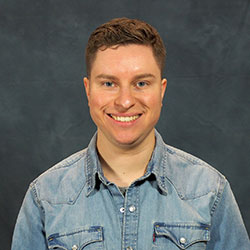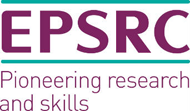Arthur Lipinski
Arthur Lipinski
My name is Arthur Lipinski and I have joined the CDT PIADS programme in 2018. I have completed my undergraduate degree in Physics with Astronomy in 2017 from Dublin City University. During my undergraduate degree I had the opportunity to explore a slightly different field of Physics/Biomedicine where I have worked in Biomedical Diagnostics Institute (BDI) in Dublin. I have worked as a Research Assistant in Microfluidics on Lab-on-a-Disc platforms. Thanks to this work experience I have learned that I prefer to work in a lab environment and occasionally run a few simulations to confirm/come up with a new experimental work.
CDT PhD Project Title: Novel Materials Synthesis for HAMR Plasmonics
Supervisor: Prof Robert Bowman (Queen’s University Belfast)
Secondary Supervisor: Prof Robert Hadfield (University of Glasgow)
Project Description:
In the last few years there is great interest in the integration of plasmonic materials into the hard disk drive recording heads to create a near field transducer (NFT) which is the key component to transmit energy to the disk to locally raise the disk temperature, reducing magnetic coercive field, and so facilitate HAMR (heat assisted magnetic recording).
The obvious noble metal/alloy candidate materials for the plasmonic NFT currently lack the necessary thermal stability to provide a long-term solution. Seagate Technology have identified a Figure of Merit (FOM) that captures the key performance required of the NFT which shows how the optical properties of plasmonic materials vary with use of different wavelengths of light. In this project, I will go beyond other work to start to look at novel ternary alloys exploiting either novel elements in periodic table rarely used outside niche microelectronics, explore engineered layered metals for low-loss plasmonics or consider strategies to create refractory plasmonic materials without refractory metals by using advanced nanofabrication techniques for features of a similar dimension to the NFT (e.g. 50 nm or less). I will use advanced deposition techniques such as UHV sputtering and an optical metrology testing protocols. To facilitate this programme, work is being undertaken to develop a spectral ATR (Attenuated Total Reflectance) technique which will be used to characterise material plasmonic properties at different wavelengths of light used to excite a surface plasmon. Further ahead, materials selection will also be informed through another Seagate Technology supported CDT project: Bringing ab-initio design to the lab: design of new plasmonic materials.
General Research/Science Interests:
As I come from an Astronomy background, I enjoy keeping up to date with the current news/events that are happening in that area. I also enjoy reading and learning about new manufacturing, nanofabrication and pattering methods that are being currently developed on the nanoscale as well as coding.
Publications:
As a result of my undergraduate work placement, I became a co-author of scientific conference paper; “Automation of Silica Bead-based Nucleic Acid Extraction on a Centrifugal Lab-on-a-Disc Platform” Journal of Physics: Conference Series 757 (2016) 012013.
CDT Involvement:
During the first year of the CDT programme I was a part of the CDT PIADS 2019 Conclave Organisational Committee where I played a role in helping out with organising this event. This was a great opportunity to gain and improve on organisational, time-keeping and teamworking skills.
Impact Activity:
For the past two years I had the opportunity to gain some teaching experience by demonstrating in the undergraduate physics labs. This has greatly improved my public speaking, presentation and teaching skills as well as refreshed my knowledge on more basic physics!
Testimonial:
CDT PIADS Programme offers excellent training and research opportunities in multiple locations. This involves having access to many state of the art facilities which can be used throughout the programme. In this programme you also get an opportunity to live in both Glasgow and Belfast where you get to explore both cities, universities, different PhD projects and career prospects.
Contact me:
Email: alipinski01@qub.ac.uk
LinkedIn: www.linkedin.com/in/arthur-lipinski
Twitter: twitter.com/arthurlipinski






